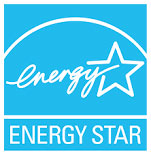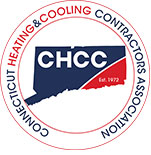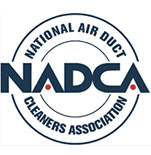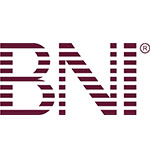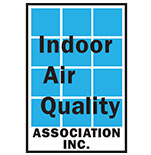FAQ
Air Duct Cleaning FAQs
Aeroseal Duct Sealing FAQs
Frequently Asked Questions about Duct Cleaning
How do I know if my air duct system needs to be cleaned?
Frequency of cleaning depends on several factors, not the least of which is the preference of the homeowner.
Households with pets should also consider cleaning their air ducts more frequently to remove excessive hair and dander that can build up and negatively affect the air quality for those in the home who may have asthma or allergies.
Some of the other things that may lead a home owner to consider more frequent cleaning include: water contamination or damage to the home or HVAC system, residents with allergies or asthma who might benefit from a reduction in the amount of indoor air pollutants in the home’s HVAC system, after home renovations or remodeling, and prior to occupancy of a new home. We offer a free inspection of your ducts to determine whether or not your system needs to be cleaned.
Are there any health benefits from having the HVAC system cleaned?
Heating, ventilation, and air conditioning (HVAC) systems have been shown to act as a collection source for a variety of contaminants that have the potential to affect health, such as mold, fungi, bacteria, and very small particles of dust. The removal of such contaminants from the HVAC system and home should be considered as the other important component in an overall plan to improve indoor air quality.
How long will it take to clean my air duct system?
A four bedroom, 2,500 sq. foot colonial style house with ducts in the basement and attic should take two men approximately 8 hours.
Duct Diagnostics’ professionals will inspect your particular system and provide a firm proposal prior to performing any work. Every system varies based on linear footage of ducts, as well as the level of contamination within the ducts.
Are there different types of duct cleaning equipment and methods of cleaning air ducts?
Yes; however there is only one way to properly clean ducts, called source removal. Source removal is a mechanical cleaning process used to remove dust, dirt, mold and debris from your system. Source removal is considered the only acceptable method for cleaning and decontaminating air duct systems and requires three elements: mechanical agitation, which loosens the dust and dirt from the walls of your HVAC system components; extraction, which removes this debris from your air ducts; and environmental controls, which involves us putting your duct system under suction with a HEPA filtered vacuum so no additional debris goes airborne. The result of this method is the safe removal of dust and contaminants from your HVAC system to levels that comply with our industry’s standards.
How do I choose a professional air duct cleaning service?
Ask yourself the following questions when selecting a potential contractor for your air duct cleaning job:
- Is this company a current member of the National Air Duct Cleaners Association (NADCA)? Are they in good standing with this organization?
- What is the business’ background? How long have they been in business?
- What experience do they have working in this area? Have they worked with homes or businesses similar to mine?
- What do customers say about their services?
- Does this business hold the right NADCA certifications to perform HVAC system cleaning?
- What equipment will they use to perform the job?
Aside from answering these questions, make sure that your potential air duct cleaning contractor visits your home to perform an HVAC system inspection before the job and provides you with a proposal for the job. Finally, it is critical that the company visually inspect all of the air ducts and related system components because any remaining debris or contaminants in the ducts after being serviced could lead to future damages and health issues in your home.
What is NADCA?
NADCA (National Air Ducts Cleaner Association) is a non-profit association of businesses that offer air duct cleaning services. As an organization, NADCA represents qualified companies that engage in the inspection, cleaning and restoration of air ducts and HVAC systems of homes and businesses. By supporting its members with proper education, certification and advocacy, the NADCA aims to make their association members the best providers of HVAC inspection, cleaning and restoration services, and air duct cleaning for consumers.
Why should I choose a NADCA member, like Duct Diagnostics, to clean my system?
As a NADCA member, we signed a Code of Ethics to protect the consumer and follow all NADCA Standards for cleaning to the best of our ability.
Duct Diagnostics also had to meet many requirements to join NADCA. We have certified Air System Cleaning Specialists (ASCS) on staff that have taken and passed the NADCA Certification Examination, validating their comprehensive understanding of HVAC design and efficient cleaning methodologies. Our company’s ASCSs are also required to attend seminars to further their education of the HVAC cleaning industry, which also allows our business to maintain our NADCA certification status as well as remain up-to-date on the most efficient processes. These extensive education requirements and certifications ensure that all NADCA members, like Duct Diagnostics, provide the most reliable air duct cleaning services to our clients.
Will there be a mess in my house or place of business?
NO. While performing our duct cleaning services, your air ducts are under tremendous negative pressure and all contaminants are contained within a HEPA Filtered negative air machine.
How can we determine whether our air ducts were cleaned properly?
Please watch our 4 minute video featured on the front page of this site. You will see our techs having the customers literally look into the ducts to verify the cleanliness.
Frequently Asked Questions about Aeroseal & Duct Sealing
Why do buildings need their air ducts sealed?
Sealing the ducts within a structure will save energy, increase the comfort and ventilation levels, and, in some cases, comply with building codes. Sealing the air ducts will also reduce chances of any cross-contamination that may occur between different building zones.
Is the sealant safe?
The Aeroseal sealant we use is very safe. There is currently no exposure limit set for vinyl acetate polymer (VAP), which is one of the main ingredients of our sealant material, and the other main ingredients have all been reported nontoxic based on years of research. After sealing, the vast majority of what is left in the duct system is VAP (vinyl acetate polymer), which has been used in water-based paints, adhesives, and hair spray. VAP has been used in chewing gum and has no OSHA exposure limit.
Does Aeroseal have an odor?
There may be a mild odor for 30 minutes after we leave, but once dry, the material is odorless throughout its lifespan.
How long does the duct sealant last?
The effectiveness of Aeroseal is guaranteed for 10 years and has been tested up to 40 years. The sealant comes with a 10-year warranty and a certificate that verifies the completion of the process.
Do my ducts need to be cleaned before the sealing process?
We highly recommend that the ducts be cleaned beforehand. The process will change the airflow in the ducts, and even if there is light debris, it may become airborne when the system is turned back on.
What if my ducts are hidden from view?
Unlike other sealing methods, Aeroseal can seal ducts that are hidden. Aeroseal can seal all types of ducts.
Accreditations
